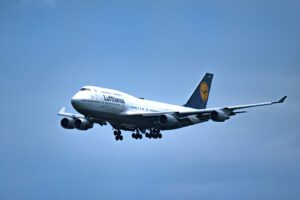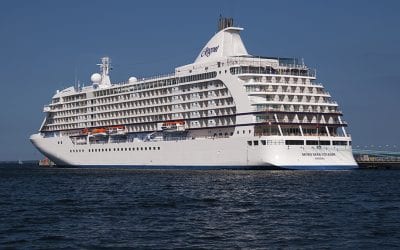I have 19 flight hacks for you that will make trip planning and organization easier and help you stay comfortable while in the air.
 There are 19 flight hacks that air travelers should undertake to prepare and organize their plane flights after making their reservations — particularly long flights — in order to make them as easy, comfortable and pleasant as possible.
There are 19 flight hacks that air travelers should undertake to prepare and organize their plane flights after making their reservations — particularly long flights — in order to make them as easy, comfortable and pleasant as possible.
I have 19 flight hacks to help make your flight as effortless and agreeable as possible.
TSA (Transportation Security Administration) can cause air travelers considerable angst, but there are ways to make airport security easier.
Enroll in TSA PreCheck:
Getting stuck in long lines at TSA airport security will get your journey off to a poor start. The security lines for TSA PreCheck members are generally much shorter than standard lines, and you don’t have to strip off your shoes, belt or lightweight jacket. You can leave your liquids baggie and electronics in your carry-on instead of placing them in separate trays.
Make sure you comply with TSA rules at airport security:
Even with PreCheck, you still must obey its air travel rules. For example, you’ll need to follow the liquids rules and make sure you don’t pack prohibited items or bring them on board your flight. If you’re flying internationally, know the security rules for each country you’re flying from.
Oversized luggage can add to your flight expenses and possibly result in a missed flight.
Be certain your luggage conforms to size restrictions:
Every airline has luggage limitations for both checked and carry-on bags, as well as personal items. The size and weight limitations vary from airline to airline. Long before your trip starts, make sure your luggage meets your airlines’ specifications. You don’t want luggage problems on the day of your flight.
Use the TSA smartphone app to check on their security lines:
To help you ensure that you’ll have adequate time to check luggage, if needed, and get past airport security, in the U.S. use the TSA smartphone app to find out the wait times at your airport’s security.
Having a noise-canceling headset, travel pillow, personal entertainment, and portable battery packs on your flight can really improve your comfort and make the flight seem to go faster.
Pack a noise-cancelling headset:
One of my air travel essentials is a noise-canceling headset. I prefer the over-the-ear type. They knock out the droning of the plane’s engines, making listening to videos, movies, audiobooks, games, and music far more enjoyable. They can also help you tune out passenger conversations around you.
Pack a travel pillow, especially for a long flight:
Sitting in a typical airplane seat, particularly in economy, for several hours or more, can be incredibly uncomfortable. A great travel pillow can make your flights tolerable.
Pack your own entertainment:
No matter how long your flight, bringing your own entertainment will make the time aloft go more quickly. To keep my carry-on weight and volume down, I put all of my entertainment on an iPad these days. I have books, movies, videos, games and music downloaded to it, ready to go.
Pack a battery pack to recharge devices plus cables:
On more and more planes, even in economy, power outlets capable of powering/recharging tablets, smartphones, handheld game systems, headsets, and some laptop computers are being installed. For when a power outlet is unavailable, or when you need to charge multiple devices, make sure you have a portable battery pack that can recharge your essentials. Have the cables you need, too.
Pack your medications so you can quickly retrieve them while in-flight, if needed.
Pack your medications in your carry-on and include a separate container with in-flight medication needs:
When you travel, if you’re using checked luggage, I highly recommend packing all your medications for your journey, both over-the-counter and prescription, in your carry-on, along with all of your breakables, valuables, essential toilet articles, spare lithium-ion batteries and a full change of clothes. For medications you might need in-flight, put them in a separate container that you can pull out before stowing your bag in the overhead bin. That will prevent you from needing to rummage through your bag during your flight to find it.
Wear layers:
You never know how warm or cold your airplane cabin will be during your flight. The temperature on many flights, especially overnight flights, can vary. By dressing in layers, you’ll be prepared to handle whatever temperature range the crew sets on your flight by removing or adding clothing layers.
Bringing your own food and drink for in-flight use can substantially improve your flight.
Bring food to eat on your flight:
On many flights, according to their length, you might not be fed by the airline at all, except for a tiny bag of chips or other snack. Plus, in the U.S. at least, not much airline food is very good. I always bring food, some prepacked snacks and really good food from home or prepared by my hotel. I make sure that none of the food violates airport security rules. Please make sure that your food isn’t very smelly to be fair to everyone else on your flight.
Bring something to drink:
Staying hydrated on airplane flights is essential to counter the cabins’ extremely dry conditions. Particularly in economy, getting something to drink when you want it is rarely easy. While it’s overpriced, get something to drink for your flight at the airport or bring an empty water bottle through airport security and fill it up inside the airport terminal. I never fly without my own water bottle.
Pull together your in-flight essentials before or immediately after boarding:
Assemble the belongings that you’ll want during your flight. Get them out of your bag before you sit down so you won’t have to go through your carry-on during your flight while it’s stowed in the overhead bin. That will make your flight easier.
Sanitizing your seat area and positioning your air vent to envelop you may help you prevent getting sick on your flights.
Sanitize your seating area:
Use sanitizing wipes on your entire seat area because seats, particularly arm rests, tray tables, seat pockets, remotes and seatbelt latch, are full of germs. I use up an entire wipe or two on the seat pocket alone.
Position your air vent as a screen:
I position my air vent to envelop me with its high velocity air as a shield of sorts to prevent airborne particles and droplets from reaching me.
For over-water flights, check for the life vest:
Over the years, I’ve found my life vest was missing twice on flights between Europe and the U.S. I reported it and the airline quickly got one for me before we left the gate.
Check your entertainment system and power outlet:
The moment you sit down, check your entertainment system and power outlet (if you have them) to ensure they’re working. If they’re not working, if your flight isn’t full, the flight crew may be able to move you to a seat with working equipment.
Knowing where the closest emergency plane exits are located could potentially save your life in an aircraft emergency.
Locate the nearest exits:
Flight emergencies are rare, but they do occur. I’ve been on a couple of flights with emergencies requiring evacuation down the chutes. Once I sit down after boarding, I count the rows to the nearest exit on both sides of the plane, in front and behind me, so I know where to go in an emergency.

Alcohol, coffee, tea, and colas dehydrate you on plane flights. Stick to beverages like water, fruit juice, ginger ale, and tomato juice.
These 19 flight hacks can help you have an easier and more pleasant flight. Use them whenever you fly.
READ ALSO:
Rental car safety? Here’s how to know before you go
Passport renewals by post, app and online — it’s easy, but start in plenty of time
(Image: Lufthansa, Boeing 747 landing at Washington Dulles International Airport, Copyright © 2022 NSL Photography, All Rights Reserved.)
After many years working in corporate America as a chemical engineer, executive and eventually CFO of a multinational manufacturer, Ned founded a tech consulting company and later restarted NSL Photography, his photography business. Before entering the corporate world, Ned worked as a Public Health Engineer for the Philadelphia Department of Public Health. As a well known corporate, travel and wildlife photographer, Ned travels the world writing about travel and photography, as well as running photography workshops, seminars and photowalks. Visit Ned’s Photography Blog and Galleries.



